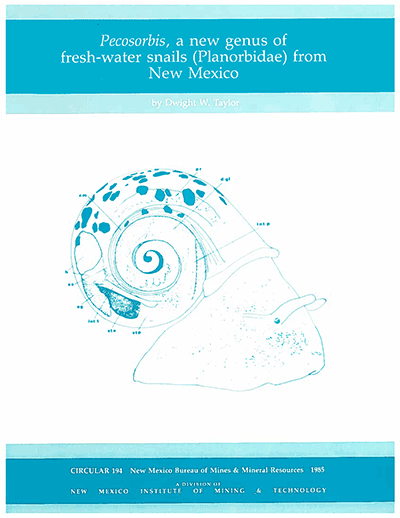
Circular 194—Pecosorbis, a new genus of fresh-water snails (Planorbidae) from New Mexico
By D. W. Taylor, 1985, 17 pp., 1 table, 14 figs.

This species was known previously only as a Pliocene fossil, but now is recognized in the Quaternary of the southwest U.S. and is living in the Pecos Valley of New Mexico. Pecosorbis is unusual because of its restricted distribution and habitat in seasonal rock pools. Pecosorbis, new genus of Planorbidae, subfamily Planorbulinae, is established for Biomphalaria kansasensis (Berry). Most similar to Menetus, it differs in having a perputial organ with an external duct, no spermatheca, and a penial sac that is mostly reversible.
The novel discovery described in this circular is significant in various
ways. Within the context of molluscan studies, scarcely anyone would have
expected this new genus in the U.S. Fresh-water snails of the family Planorbidae
have been studied for a long time in North America, and Pecosorbis is markedly distinct in taxonomic characters. Its habitat in seasonal pools
and its restricted distribution are unusual. Furthermore, it proves to be
a "living fossil," a Pliocene species thought to be extinct. Although
several Pleistocene species of fresh-water molluscs have been discovered
alive, this is the first occasion in North America when a Tertiary form
has been recognized as living. Once again shell features in Planorbidae
are shown to give little clue to relationships, and the original generic
allocation of the fossils is revised significantly.
$4.75
Buy
Now
Also available as a free download.
Download
| File Name | Size | Last Modified |
|---|---|---|
| Circular-194.pdf | 1.32 MB | 01/11/2021 03:43:41 PM |



